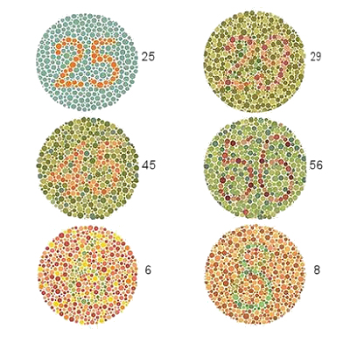
The problem of function of the cells perceiving colours in the retina leads to the perception of some colours, even sometimes all colours, as shaded or greyish.
This case is called colour blindness.
The cells perceiving colours in the retina involve three different pigments (red, green and blue).
If one, two or three of these pigments, is/are fewer than it/they should be or not available, that person has colour blindness.
If one of these pigments is lacking, but the other two are complete, this is called Anomalous Trichromacy and is the type of colour blindness that is most frequently seen. In this type of colour blindness, people cannot see red, blue or green.
While colour blindness may be congenital, it may also emerge as a result of the diseases undergone.
Colour blindness is seen at a frequency of 8% in men and 0.4% in women.
Contrary to what most people think, the world is not seen as black-white in colour blindness, generally only separation of the tones of red and green is a problem.
Most people find out that they have colour blindness only as a result of the routine examination.
Diagnosis of colour blindness is done with the Ishihara test.
It is not possible to completely treat colour blindness, however colour separation may be made with contact lenses with special filters or glasses.